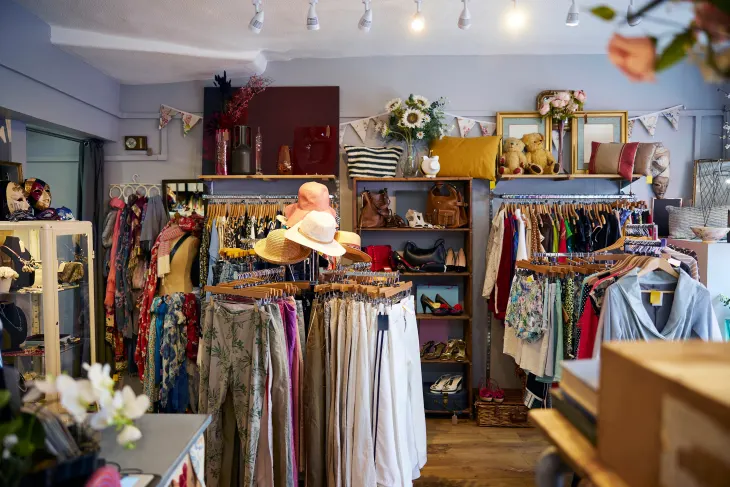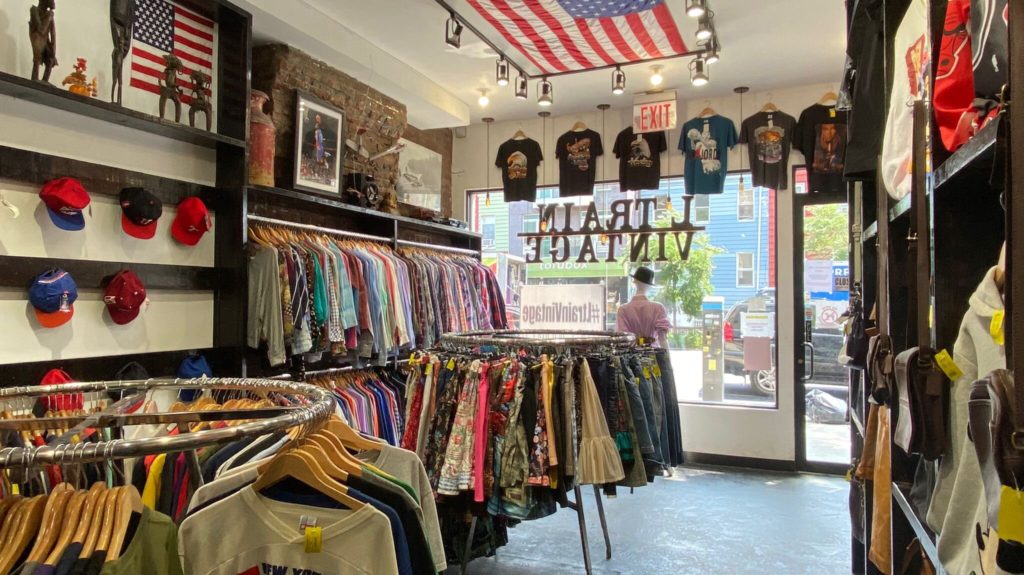The Resurgence of Thrift: Exploring the Cultural and Environmental Impact of Thrift Stores in the 21st Century
In recent years, thrift stores have experienced a remarkable resurgence, transcending their traditional role as budget-friendly shopping destinations. This shift goes beyond economic considerations, encompassing a complex interplay of cultural and environmental factors. From the vibrant diversity of items to the sustainability ethos they embody, thrift stores have become emblematic of a changing consumer landscape. Many people repair home appliances at an appliance repair service in Washington DC and then sell them to thrift shops that allow people to buy them for less than they would pay for new ones.
Embracing Diversity: The Eclectic Offerings of Thrift Stores

Thrift stores have evolved into treasure troves of diversity, offering an eclectic mix of clothing, furniture, and curiosities from different eras. Wander through the aisles, and you may find a vintage leather jacket nestled beside a contemporary piece, creating a unique tapestry of styles. This amalgamation of items reflects a departure from the homogeneity often found in mainstream retail spaces. The allure lies in the unexpected discoveries, fostering a sense of excitement and individuality among shoppers.
This diversity extends beyond the merchandise itself, encompassing the people who frequent thrift stores. Unlike conventional retail settings, thrift stores attract a broad spectrum of individuals, each with their own stories and tastes. The cashier may ring up a college student in search of budget-friendly finds alongside a seasoned collector hunting for hidden gems. In places like this, you can also find used books that students can use in the Readathon school fundraiser, which rewards children for reading. This communal atmosphere contributes to the distinct character of thrift store culture, creating a microcosm where diversity is not only celebrated but embraced.
The significance of this diversity goes beyond aesthetics; it becomes a powerful antidote to the cookie-cutter nature of modern consumerism. Thrift stores, by embracing a range of styles and tastes, challenge the prevailing notion that fashion should adhere to a narrow set of trends dictated by the industry. In doing so, they empower individuals to express their uniqueness and personal narratives through the items they choose to buy and wear. With the fact that everyone will leave with something useful and creative, like interesting wine glasses or even a second-hand coffee table. The eclectic nature of thrift stores, therefore, fosters not only a diverse shopping experience but a celebration of individuality and self-expression.
Furthermore, the diversity found in thrift stores serves as a historical archive, chronicling the evolution of fashion and design. Each item on the shelves carries a story, reflecting the trends, cultural influences, and craftsmanship of its time. In essence, thrift stores become living museums, allowing shoppers to connect with the past while simultaneously influencing the present. This historical depth adds a layer of richness to the act of thrift shopping, creating a dynamic interplay between the old and the new, the classic and the contemporary. With the help of an Internet service provider that manages IT services in San Antonio, many thrift stores also have their websites where customers can see what interesting things they can find in the store at that moment.
Sustainability in Style: Redefining Fashion’s Environmental Impact
The environmental impact of the fashion industry has come under increasing scrutiny in recent years. Fast fashion’s rapid turnover of trends contributes to substantial waste and resource depletion. In this context, thrift stores emerge as champions of sustainability, providing a viable alternative to the cycle of overconsumption. Fashion Courses also deal with this issue of recycling trends and the use of second-hand items to achieve enviable looks. When you purchase second-hand, you participate in a form of recycling, giving pre-loved items a new lease on life.
Thrift stores act as repositories for fashion history, allowing garments to transcend their original owners and extend their narrative. This shift towards sustainable fashion not only reduces the demand for new production but also challenges the notion that style must come at the expense of the environment. The rise of thrift stores signals a cultural shift towards more conscientious consumer choices, emphasizing the importance of longevity and mindful consumption. This can also be reflected in the interior, where something that someone no longer needs can fit perfectly into someone else’s style, for which inspiration can be found in houses in Boca Falls.
The environmental impact of thrift stores extends beyond their role as purveyors of sustainable fashion. By promoting the reuse of items, they contribute to the reduction of landfill waste and lessen the overall carbon footprint associated with the production and transportation of new goods. Thrift stores, therefore, become integral players in the broader movement toward a circular economy, where resources are conserved, and the lifespan of products is extended.
Moreover, the sustainability ethos of thrift stores resonates with a growing segment of the population concerned about environmental issues. As consumers become more conscious of their ecological footprint, thrift stores offer a tangible and accessible way to align one’s values with shopping habits. This alignment fosters a sense of empowerment, as individuals realize that their choices can contribute positively to environmental conservation. In essence, thrift stores become catalysts for a cultural shift, where sustainability and style coalesce, forming a new paradigm for the fashion industry. As part of Google ads, you can often come across promotions of these thrift stores, and if your Google ads are suspended, you can find a professional to solve the problem.
Economic Empowerment: Thrift Stores as Community Hubs

Beyond the economic benefits for individual shoppers, thrift stores play a crucial role in supporting local communities. These establishments often operate as charitable organizations, with proceeds directed towards community programs and initiatives. The act of donating and purchasing from thrift stores becomes a form of community investment, fostering a sense of collective responsibility.
Moreover, thrift stores serve as avenues for economic empowerment, offering affordable options for those on a budget. In a society where economic disparities persist, thrift stores provide access to necessities and luxuries alike, breaking down economic barriers and promoting inclusivity. The democratization of style and goods is a powerful force, positioning thrift stores as hubs of economic resilience and community cohesion. This type of environmental saving is also applicable to emergency restoration services in Charlotte, where old pipes can be recycled after pipe repair.
The economic impact of thrift stores extends beyond individual shoppers, reaching into the very fabric of local communities. As these stores often operate as nonprofit entities or contribute to charitable causes, the money spent within their walls circulates back into community development initiatives. Business lawyers in Dubai can explain such business ventures and the benefits behind them. This cyclical process creates a self-sustaining ecosystem, where the act of buying and donating to thrift stores becomes a virtuous cycle of economic support.
Furthermore, thrift stores serve as platforms for skill development and employment within communities. Many thrift stores engage in job training programs, providing individuals with valuable skills that can be applied in various professional settings. This commitment to skill development contributes not only to individual empowerment but also to the overall economic vitality of the community. Thrift stores, in this light, become more than retail spaces; they evolve into centers of economic opportunity and community development. Through student organizations with cheap flights, students around the world are offered the opportunity to earn a little more and gain the necessary experience by working in these stores.
Crafting Identity: Personal Narratives Through Pre-Loved Items
As we navigate the thriving landscape of thrift stores, a compelling aspect emerges — the ability to craft individual identities through pre-loved items. As well as complementing our collections with things we love, such as smoking accessories or kitchenware. In a world inundated with mass-produced goods, the unique character of thrift store finds becomes a tool for self-expression. Shoppers curate their wardrobes and living spaces with pieces that tell stories, not just of fashion trends, but of personal journeys and experiences.
Each item in a thrift store has a history, a narrative waiting to be discovered and integrated into one’s own story. A vintage dress worn to a historic event, a well-loved book that has traveled through numerous hands — these artifacts become more than possessions; they become vessels of shared experiences. Used scripts that even homeschooling tutors in Bettendorf use to teach students because they contain some of their notes. This aspect of storytelling through material culture transforms thrift stores into curated galleries of memories, challenging the notion that consumerism is a detached, impersonal endeavor.
Moreover, the act of choosing second-hand items becomes a conscious rejection of the disposable culture that often defines modern consumerism. In a world dominated by fast fashion and rapidly changing trends, thrift stores offer an alternative narrative — one of longevity, enduring style, and a commitment to sustainable living. The individuals who frequent thrift stores are not just consumers; they are curators of a more meaningful, deliberate lifestyle. Although thrift stores still need protection from theft and burglars, some stores have installed an access control system in Philadelphia.
Community Connection: Fostering Social Bonds Through Shared Values
The vibrancy of thrift store culture extends beyond the aisles and into the community, creating spaces where individuals with shared values converge. Beyond being places of transaction, thrift stores become hubs for social interaction, where like-minded individuals connect over a shared commitment to sustainability, diversity, and economic empowerment.
Community events and initiatives organized by thrift stores amplify their role as social catalysts. From clothing swaps to workshops on upcycling and sustainable living, these activities transform thrift stores into dynamic community centers. The connections formed within these spaces transcend mere consumer relationships, evolving into genuine friendships built on shared values and a collective vision for a better, more sustainable future.
The sense of community fostered by thrift stores contributes to a broader cultural shift. It challenges the prevailing narrative that individualism and consumerism are mutually exclusive. Instead, thrift store communities demonstrate that personal choices can have a collective impact, fostering a sense of belonging and shared responsibility. The result is a cultural tapestry woven with threads of diversity, sustainability, and community, illustrating the potential for retail spaces to transcend their conventional roles.
Educational Empowerment: Thrift Stores as Platforms for Conscious Consumption

In this thriving future of thrift, these stores become not only purveyors of goods but also platforms for education and empowerment. Conscious consumption, once a niche concept, takes center stage as thrift stores actively engage in initiatives that inform and empower shoppers to make informed choices.
Educational programs within thrift stores provide insights into the environmental and social implications of consumer choices. Workshops on sustainable fashion, recycling practices, and the impact of second-hand shopping on reducing carbon footprints become integral components of the thrift store experience. By disseminating knowledge, thrift stores empower individuals to make choices aligned with their values, fostering a sense of agency in the face of complex global challenges.
Furthermore, thrift stores become advocates for transparency in the production and distribution of goods. They highlight the stories behind the items on their shelves, shedding light on the journey from creation to donation. This transparency not only builds trust but also reinforces the narrative that every purchase is a conscious decision with far-reaching implications.
Conclusion: Beyond Transactions, Thrift Stores as Agents of Change
In conclusion, the thriving future of thrift stores extends beyond the transactional nature of retail. These spaces evolve into dynamic arenas where personal narratives are crafted, communities are forged, and education becomes a catalyst for change. Thrift stores are not just providers of affordable goods; they are agents of cultural and environmental transformation.
As we navigate this evolving landscape, it becomes evident that thrift stores are not relics of the past but pioneers of a more sustainable and meaningful future. They challenge the norms of consumerism, offering an alternative narrative that places value on diversity, sustainability, and community. The cultural and environmental renaissance sparked by thrift stores is not a fleeting trend; it’s a movement that invites individuals to redefine their relationship with material culture and, in doing so, shape a more conscious and compassionate world. In this thriving future of thrift, every purchase becomes a statement, every item a story, and every individual a participant in a global movement towards a more sustainable and interconnected future.

